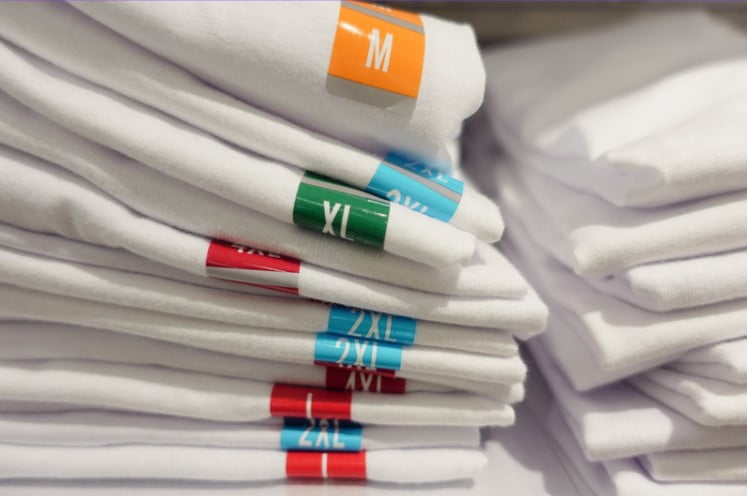Unlocking Profit: Reducing Returns in Online Fashion

One of the biggest challenges facing fashion ecommerce is the issue of sizing, a problem that has troubled offline retailers since the dawn of mass-produced clothing. The diversity of human body shapes and dimensions makes it difficult to establish uniform clothing sizes. Sizing can vary significantly from brand to brand and even within a single brand’s product range.
The concept of sizing is inherently fluid. Brands tailor their sizing based on insights about their customers, resulting in different brands using different dimensions to represent sizes. While this approach offers consumers a broader range of fits, it also complicates the search for the perfect size. In a recent survey, 70% of consumers reported that finding clothes that fit was “very difficult.”

Online Fashion Buyers Struggle with Fit
Shopping for fashion online presents even more challenges. Consumers must rely on sizing charts, product descriptions, images, and information from brands and other shoppers. These strategies, however, often fall short.
A recent survey found that the primary reason for returns was incorrect size, fit, or color. Another survey revealed that 79% of fashion shoppers returned items due to dissatisfaction with fit or quality. Additionally, online shoppers sometimes return items because they look different in person than they did online. This lack of effective sizing solutions leads to purchases that fail to meet consumer expectations.
The Cost of Poor Fit for E-tailers
When customers receive apparel that doesn’t meet their expectations, return rates soar, and consumer confidence wanes. Returns due to poor fit or unmet expectations, as well as the practice of “bracketing” (ordering multiple sizes or colors to try on at home), are costly for online retailers. Companies often bear the costs of both outgoing and return shipping, along with the expenses of processing and restocking unwanted items.
The problem is extensive. Return rates for online fashion purchases range from 30% to 50%. Handling and processing returns cost businesses an average of $10 per return, not including the expense of sorting and redistributing merchandise. Furthermore, because apparel may be out of season by the time it’s returned, retailers often have to discount returned items. Fewer than half of returned items are resold at full price.
Not all merchandise can be resold. Some items are donated or incinerated, which is costly for businesses and harmful to the environment. It’s estimated that 25% of all returned items—5 billion pounds annually—end up in landfills. Combined, online and offline returns cost retailers nearly $400 billion annually.
Impact on Margins and Brand Loyalty
The costs of returns erode ecommerce’s already slim margins. Online apparel retailers need higher margins per garment than their brick-and-mortar counterparts to cover higher customer acquisition, distribution, and return costs. As competition in fashion ecommerce intensifies, increasing sales volume and retaining loyal customers become crucial for brands’ survival. Ensuring the right fit for customers is vital in this regard.
Returns not only strain finances but also risk customer loyalty. A difficult return experience can drive customers away, especially new ones. A recent report found that 31% of new customers wouldn’t shop with a retailer again after a challenging return experience. Even repeat customers can become frustrated if they struggle to find the right size.
Customer reviews and testimonials are essential for online sales and conversions. A study found that 95% of users rely on reviews to evaluate products, and displaying reviews can increase conversions by up to 270%. Fit is a critical factor in these reviews; Amazon even has a category for fit feedback. Positive and negative reviews significantly impact prospective customers, as do social media posts. According to a lifestyle monitor, 46% of consumers aged 25 to 34 use social media to find new fashion ideas, and 82% of consumers are likely to buy a product recommended by a micro-influencer.
Solutions to the Fit Problem
Improving fit technology presents a significant opportunity for fashion brands to enhance customer experience and reduce return rates. Several companies are developing fit technology, including My Size, Hemster, and True Fit. Other companies like TailorGuide, Sizer.me, Virtusize, and Asos also offer solutions such as virtual try-on tools, personalized measurements, and fit-based searches.
Fashion retailers can take additional steps to improve customer experiences and reduce returns:
Detailed Product Information
Provide detailed product information, including fabric descriptions and garment measurements.
Size Guides
Create size guides with multiple points of measurement.
instructions
Publish instructions for taking accurate measurements.
Diverse Fit Models
Offer diverse fit models to showcase each item.
High-Quality Images
Display multiple high-quality images from various angles.
Feedback
Encourage honest feedback and customer photos.
Adapting to Changing Consumer Demands
The year 2020 has been a turning point for online commerce, with many consumers shopping online for the first time. To maintain this momentum and meet evolving customer needs, online apparel sellers must continue innovating to reduce returns. By doing so, they can increase revenue, reduce waste, and build lasting customer loyalty.
